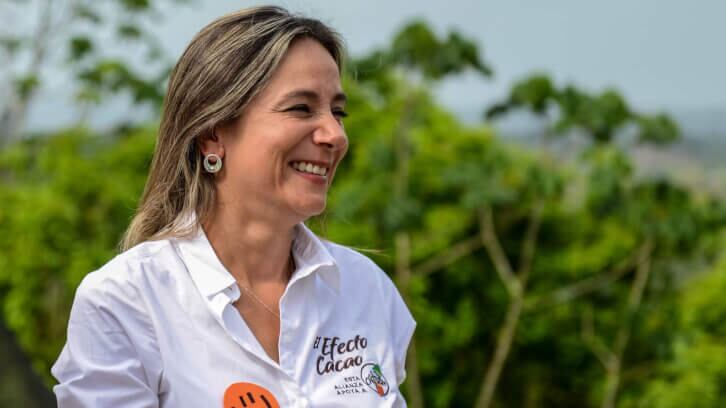From August 2022 to August 2023, sugar prices rose by almost 34% while the cost of cocoa increased by a staggering 53%.
Both these commodities comprise key ingredients in the production of confectionery goods. As such, the increase in the prices of these products is having a direct impact on the input costs of food products, leading to an increase in the cost of confectionary items, including chocolate and sweets for end-consumers. To put this into context, sugar makes up an estimated 7%of the total raw material cost in a chocolate muffin, with cocoa’s cost share around 20%. Therefore, the price of the product is set to rise significantly due to the increasing cost of the key ingredients used in the baking process.
Surging cost of sugar
The sharp rise in the price of sugar in the last 12 months follows a weak global supply due to declining production in key sugar-producing countries, such as India, Thailand, and Brazil. This considerable increase in sugar prices has become known as ‘sugarflation’.
One major contributor to this inflation in sugar’s price is the El Niño weather event. The weather phenomenon – which officially began in June 2023 and causes Asia, West Africa, and Australia to experience frequent dry periods, as well as heavy rainfall in Brazil and parts of the US and Mexico – is affecting the production of a number of agricultural commodities, including sugar.
The weather event caused India to experience its driest August in 122 years, leading to approximately a 50% year-on-year (YoY) decline in rainfall in the key sugar-producing states of Maharashtra and Karnataka. Combined, these two regions account for an estimated 50% of the country’s sugar output. As such, Maharashtra is set to experience a 14% fall in sugar output for the marketing year 2023-24.
Elsewhere, Thailand’s 2023-24 sugar production is projected to drop by 18% YoY due to the dry conditions. Meanwhile in Brazil, sugar content in sugarcane has fallen due to excessive rains during the crop development period caused by the El Niño weather phenomenon.
Sugar prices are likely to continue trending upwards amid concerns of a shortfall in the global sugar market. Due to the intense nature of the El Niño dry season in India and Thailand, this is likely to lead to severe drought, which could see a 10-15%reduction in sugarcane production globally. Whereas, in Brazil, it is anticipated that the heavy rainfall will delay the sugarcane crop harvest.
Therefore, the global sugar market is predicted to witness around 2mmt (million metric ton) deficit for the marketing year 2023-24. This will make it the second year in a row in which the commodity market will witness a supply deficit.
Historically high cocoa prices
In July of this year, London cocoa prices surged above £2,700/tonne for the first time since 1977, while the commodity’s price in New York rose to its highest price in more than 12 years. This global price hike is largely being driven by tight cocoa supplies and low levels of production in Ghana and Ivory Coast – two of the global leaders in cocoa.
This reduction in cocoa yields has been caused by abundant rainfall in parts of West Africa throughout the summer months, which has led to the spread of both the black pod disease and the swollen shoot virus in Ghana and Ivory Coast. The disease outbreaks have negatively impacted crop quality and production, with the Tropical Research Services reporting that approximately 20% of cocoa crop has already become infected by the latter virus. As such, Ghana's cocoa harvest is now predicted to decline for the marketing year 2023-24.
What’s more, the heavy rainfall has also given rise to logistical issues. Roads have become obstructed, preventing goods from reaching ports in the region. This resulted in cocoa arrivals at ports in Ivory Coast falling by 2.9%YoY from October 2022 to 30 July 2023.
The price of the commodity is expected to remain firm in the coming months, and even has the potential to increase further. This is on account of weak supply of cocoa beans in West Africa as a result of the wet weather patterns in the region and the spread of diseases, in addition to concerns regarding the impact of El Niño. The weather event is expected to cause hot and dry conditions across West Africa, which will result in a further reduction in cocoa output.
Adding to this, stocking demand during the festive season may further push up cocoa demand, causing the soft commodity’s price to remain inflated for the rest of the calendar year.
Preventing disruption amongst food producers
As a quick fix to mitigate the impact of sugarflation and rising cocoa prices, food manufacturers have started to transfer the burden of increased commodity input costs to consumers. However, in terms of finding a solution which does not significantly impact consumer prices, food manufacturers should implement a multipronged strategy to tackle low exports and production. This includes actively evaluating numerous suppliers and assisting their critical vendors. By identifying suppliers in a variety of territories, consumer packaged foods (CPG) firms can reduce their dependence on sole providers and geographies.
What’s more, it is vital for organisations to track adverse weather events and disease outbreaks as they evolve. For example, with El Niño, firms must monitor its development and regularly assess the potential consequences the weather phenomenon may have on key territories and suppliers.
An innovative approach that some food producers have started utilising to deal with these rising ingredient costs is reducing how much of a commodity they use when making their products. For example, businesses are actively working on technologies that lessen sugar content in foods. Some companies have introduced a sugar reduction technology which, through an enzymatic process, reduces intrinsic sugar in fruit juice, malt, and milk products by as much as 30%. Using this technology would mean CPG companies wouldn’t have to raise product prices for end-consumers to cover rising input costs.
As a result of supply constraints, sugar and cocoa prices are expected to remain elevated in the short to medium term. Nevertheless, these price hikes may last for an extended period, especially in the event that the El Niño weather phenomenon persists for an extended period of time. This would see increased confectionery costs persist beyond the festive season.




